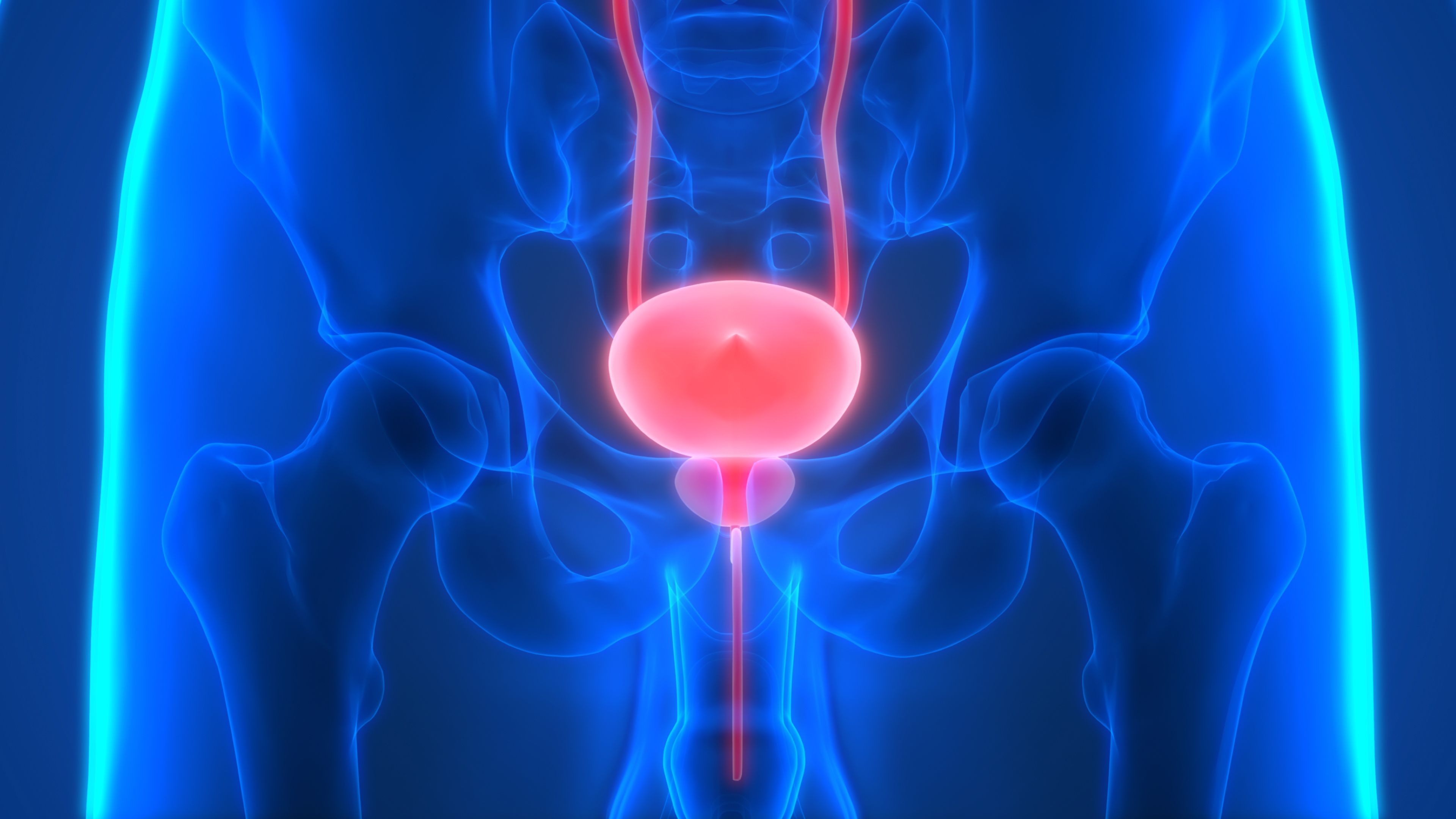UGN-102 +/- TURBT Effective in Newly Diagnosed and Recurrent Low-Grade NMIBC
A study found that UGN-102, used alone or combined with TURBT, resulted in comparable duration of response and disease-free survival rates in both patients newly diagnosed with and those with recurrent low-grade/intermediate non-muscle invasive bladder cancer.
Bladder Image: © magicmine stock.adobe.com

In a prespecified analysis of the phase 3 ATLAS trial (NCT04688931), treatment with UGN-102 given with or without transurethral resection of bladder tumor (TURBT) displayed similar duration of response (DOR) and disease-free survival (DFS) rates in patients with newly diagnosed and recurrent low-grade, intermediate-risk non–muscle-invasive bladder cancer (NMIBC), according to findings presented at the 2024 American Urological Association Annual Meeting.
Findings from the prespecified subgroup analysis of ATLAS demonstrated that patients with newly diagnosed disease who received UGN-102 with or without TURBT (n = 85) achieved a 15-month DFS rate of 77.4% and those with recurrent disease (n = 57) achieved a 15-month rate of 63.2%. Additionally, patients who experienced a complete response (CR) in the newly diagnosed (n = 50) and recurrent (n = 42) subgroups achieved a 12-month DOR rate of 87.5% and 69.1%, respectively.
“UGN-102 is a thermal gel [that come in an] aqueous form when it’s cold, and when it’s instilled into the body and it’s warmed it becomes a soft, semi-solid gel,” William C. Huang, MD, the vice chair for Clinical Affairs in the Department of Urology, and the co-director of the Robotics Program at NYU Langone Health, as well as a professor in the Departments of Urology and Radiology at NYU Grossman School of Medicine, in New York, New York, explained during the presentation. “It is linked to mitomycin and [provides] a way of delivering intravascular therapy as a form of chemoablation. One of the advantages of linking a chemotherapy agent to this reverse thermal gel is that the agent that’s instilled into the bladder can be retained for several hours, whereas other agents are primarily emptied after the first void. By linking chemotherapy agents such as mitomycin to the reverse thermal gel, it can prolong exposure for up to 6 hours.”
ATLAS was a prospective, open-label study that enrolled patients with low-grade intermediate-risk NMIBC who were diagnosed via cold cup biopsy across 72 sites in the United States, Europe, and Israel. Patients needed to be at least 18 years old, have visible tumor left in situ and negative voiding cytology for high-grade disease. Intermediate-risk disease was defined as the presence of 1 or 2 of the following: multiple tumors, solitary tumor greater than 3 cm, and/or recurrence of low-grade NMIBC within 1 year of current diagnosis.2
Eligible patients were randomly assigned 1:1 to receive 6 weekly intravesical instillations of UGN-102 or TURBT. After approximately 3 months, all patients returned for determination of response; those with a confirmed CR received no further treatment and those without a CR in both arms received TURBT.
The primary end point was DFS. Key secondary end points included CR rate and DOR. In the prespecified subgroup analysis presented during the meeting, investigators used Kaplan-Meier methods to estimate the DOR and DFS in newly diagnosed and recurrent patients.1,2
The baseline characteristics of the 2 arms of the subgroup analysis were generally well balanced; the median age in the newly diagnosed and recurrent groups was 66.0 years vs 69.0 years, respectively. Most patients in both subgroups were male (72.9% vs 75.4%), had multiple tumors (52.9% vs 64.9%), and had a history of smoking (54.1% vs 57.9%). Most patients in the recurrent group received prior TURBT (91.2%). Most patients in the newly diagnosed group had tumors measuring more than 3 cm (63.5%) compared with 22.8% of the recurrent group.
Patients in the safety population with newly diagnosed (n = 57) and recurrent disease (n = 81) experienced any-grade treatment-related adverse effects (TRAEs) at a rate of 74.1% vs 77.2%, respectively. Common any-grade TRAEs in both groups included dysuria (25.9% vs 36.8%), micturition urgency (14.8% vs 22.8%), pollakiuria (12.3% vs 21.1%), and nocturia (11.1% vs 28.1%).
“The ATLAS trial was concluded early and led to the [phase 3] ENVISION trial [NCT05243550], which is ongoing at this time assessing as a single-arm trial the efficacy of UGN-102,” Huang said in conclusion. “[We] anticipate completing the submission of the rolling new drug application for UGN-102 in 2024 with a potential FDA decision as early as quarter 1 of 2025.”